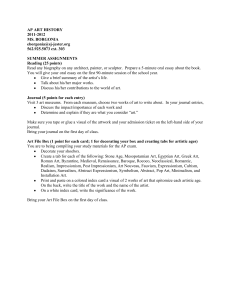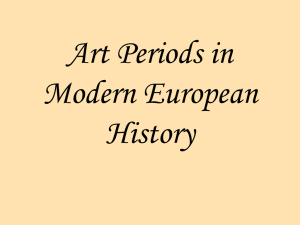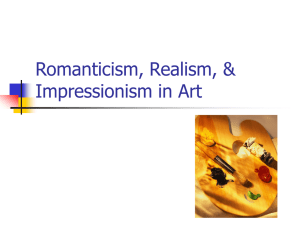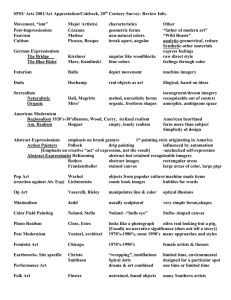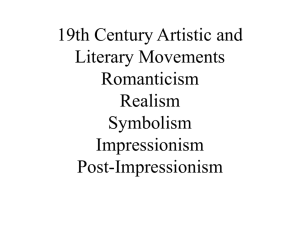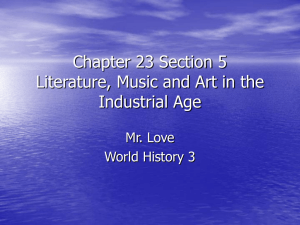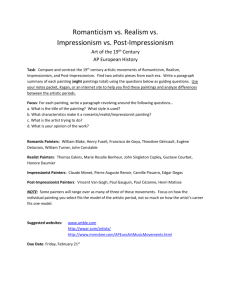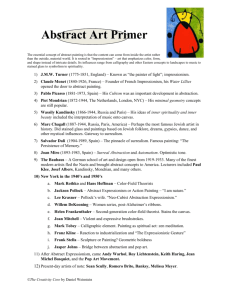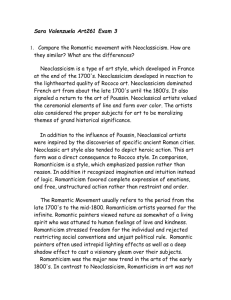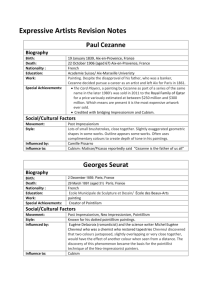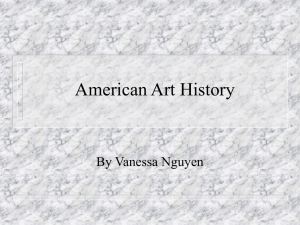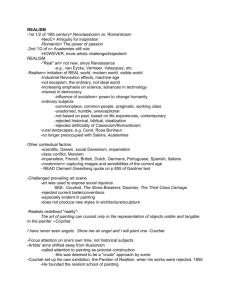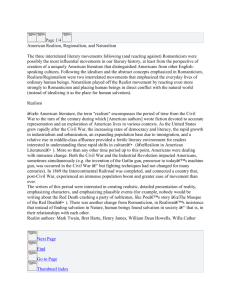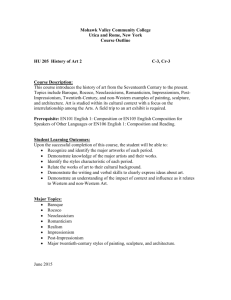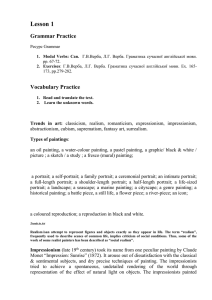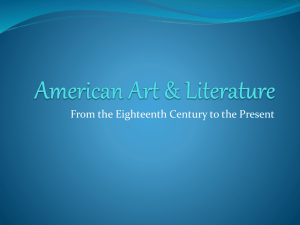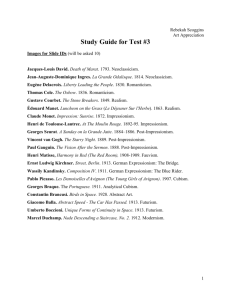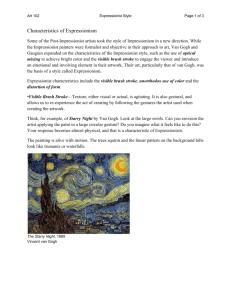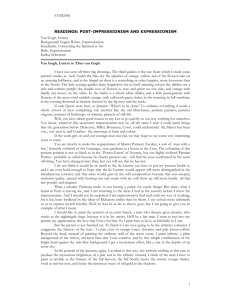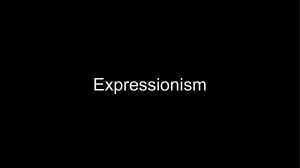Painting style
advertisement
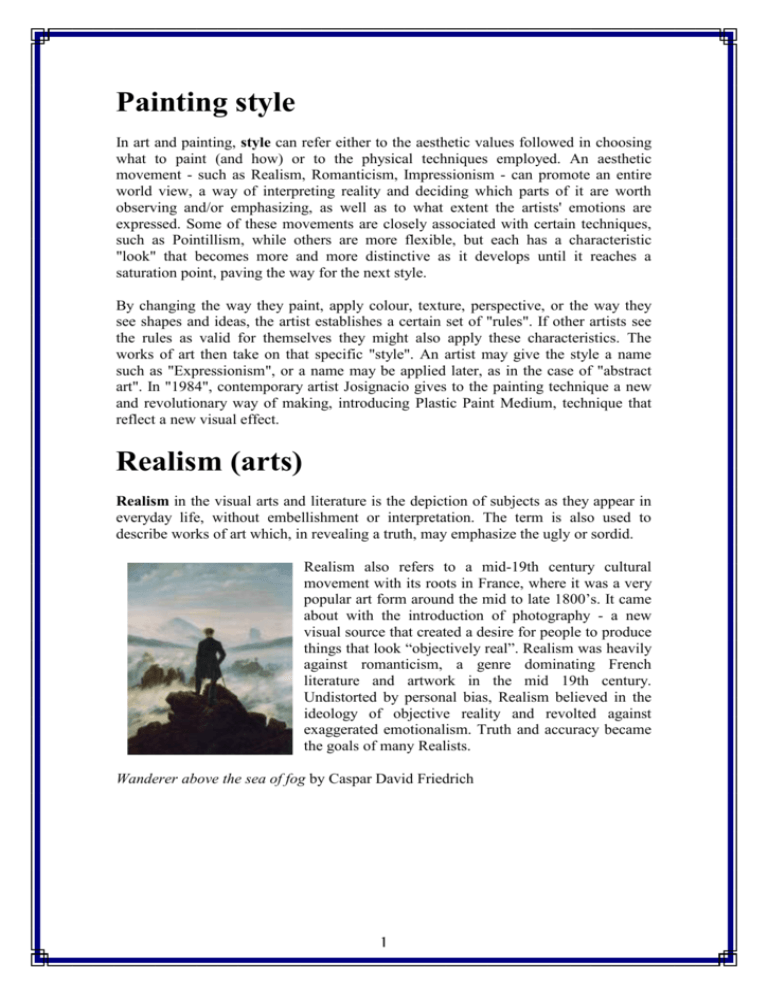
Painting style In art and painting, style can refer either to the aesthetic values followed in choosing what to paint (and how) or to the physical techniques employed. An aesthetic movement - such as Realism, Romanticism, Impressionism - can promote an entire world view, a way of interpreting reality and deciding which parts of it are worth observing and/or emphasizing, as well as to what extent the artists' emotions are expressed. Some of these movements are closely associated with certain techniques, such as Pointillism, while others are more flexible, but each has a characteristic "look" that becomes more and more distinctive as it develops until it reaches a saturation point, paving the way for the next style. By changing the way they paint, apply colour, texture, perspective, or the way they see shapes and ideas, the artist establishes a certain set of "rules". If other artists see the rules as valid for themselves they might also apply these characteristics. The works of art then take on that specific "style". An artist may give the style a name such as "Expressionism", or a name may be applied later, as in the case of "abstract art". In "1984", contemporary artist Josignacio gives to the painting technique a new and revolutionary way of making, introducing Plastic Paint Medium, technique that reflect a new visual effect. Realism (arts) Realism in the visual arts and literature is the depiction of subjects as they appear in everyday life, without embellishment or interpretation. The term is also used to describe works of art which, in revealing a truth, may emphasize the ugly or sordid. Realism also refers to a mid-19th century cultural movement with its roots in France, where it was a very popular art form around the mid to late 1800’s. It came about with the introduction of photography - a new visual source that created a desire for people to produce things that look “objectively real”. Realism was heavily against romanticism, a genre dominating French literature and artwork in the mid 19th century. Undistorted by personal bias, Realism believed in the ideology of objective reality and revolted against exaggerated emotionalism. Truth and accuracy became the goals of many Realists. Wanderer above the sea of fog by Caspar David Friedrich 1 Romanticism Romanticism is an artistic, literary and intellectual movement that originated in 18th century Western Europe. In part a revolt against aristocratic, social, and political norms of the Enlightenment period and a reaction against the rationalization of nature, in art and literature it stressed strong emotion as a source of aesthetic experience, placing new emphasis on such emotions as trepidation, horror, and the awe experienced in confronting the sublimity of nature. It elevated folk art, nature and custom, as well as arguing for an epistemology based on nature, which included human activity conditioned by nature in the form of language, custom and usage. It was influenced by ideas of the Enlightenment and elevated medievalism and elements of art and narrative perceived to be from the medieval period. The name "romantic" itself comes from the term "romance" which is a prose or poetic heroic narrative originating in medieval literature and romantic literature. The ideologies and events of the French Revolution are thought to have influenced the movement. Romanticism elevated the achievements of what it perceived as misunderstood heroic individuals and artists that altered society. It also legitimized the individual imagination as a critical authority which permitted freedom from classical notions of form in art. There was a strong recourse to historical and natural inevitability in the representation of its ideas. Impressionism. Impressionism was a 19th century art movement that began as a loose association of Paris-based artists, who began exhibiting their art publicly in the 1860s. The name of the movement is derived from the title of a Claude Monet work, Impression, Sunrise (Impression, soleil levant), which provoked the critic Louis Leroy to coin the term in a satiric review published in Le Charivari. Characteristics of Impressionist painting include visible brushstrokes, open composition, emphasis on light in its changing qualities (often accentuating the effects of the passage of time), ordinary subject matter, and unusual visual angles. The emergence of Impressionism in the visual arts was soon followed by analogous movements in other media which became known as Impressionist music and Impressionist literature. 2 Impressionism also describes art created in this style, but outside of the late 19th century time period Expressionism Portrait of Eduard Kosmack by Egon Schiele Rehe im Walde by Franz Marc "Elbe Bridge I" by Rolf Nesch "On White II" by Wassily Kandinsky, 1923 "View of Toledo" by El Greco, 1595/1610 has been pointed out to bear a particularly striking resemblance to 20th century expressionism. Historically speaking it is however part of the Mannerism movement. 3 The Scream by Edvard Munch (1893) which inspired 20th century Expressionists Expressionism is the tendency of an artist to distort reality for an emotional effect; it is a subjective art form. Expressionism is exhibited in many art forms, including painting, literature, theatre, film, architecture and music. Additionally, the term often implies emotional angst – the number of cheerful expressionist works is relatively small. In this general sense, painters such as Matthias Grünewald and El Greco can be called expressionist, though in practice, the term is applied mainly to 20th century works. 4
